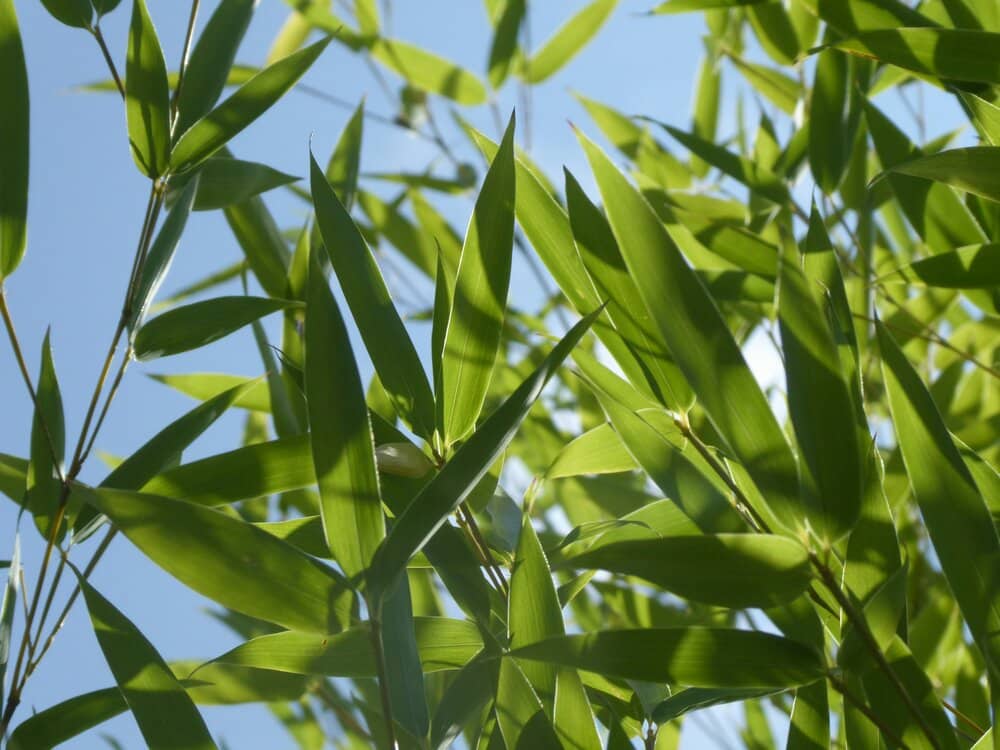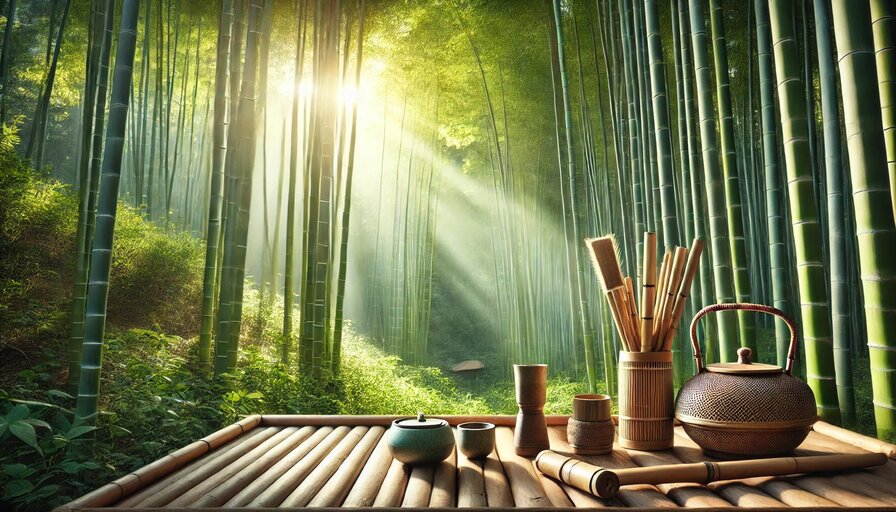Did you ever hear the real story behind bamboo? The history of bamboo isn’t just long—it’s full of clever uses, cultural meaning, and everyday problem-solving that still holds up today.
Most people know what bamboo looks like. But not everyone stops to think about how long people have been using it—or why it stuck around for so long. Before it showed up in home decor and reusable cutlery, it was just part of life.
In some parts of the world, you’d see bamboo everywhere. People built with it, cooked in it, even made music with it. Back in the days, nobody thought of it as eco-anything. It was just something that worked. It held up, didn’t take long to grow, and was easy to work with. That’s really all they needed.
Covered Below
Bamboo in Daily Life Around the World
Throughout the history of bamboo, people used it for far more than just shelter and tools. In China, it became one of the earliest materials used for paper-making. You’d also find it in traditional medicine, used to treat infections or reduce swelling.
In China, bamboo wasn’t just useful—it was part of daily life. People cooked with it, built homes, and made scrolls and tools. In Japan, it was used in quiet gardens and temples, and even showed up in martial arts gear. In India, they called it “the poor man’s timber,” not as an insult, but because it held things together—homes, fences, food supplies.
In other regions, bamboo was just as practical. South American families wove it into baskets and built shelter from it. In parts of Africa, it stood in for metal and wood when those weren’t available. On the Pacific Islands, it became boats, instruments, and anything else people needed.
It didn’t matter where you were. If bamboo grew nearby, people used it. Not because it was trendy. Just because it made sense.
But it wasn’t just useful for humans. Did you know that pandas depend on it almost entirely for food? In fact, these cuddly creatures eat up to 40 pounds of bamboo a day! Learn more about their diet here and how bamboo supports more than just human needs.

Built to Solve Real Problems
Bamboo didn’t just fit into everyday life—it often replaced costlier or harder-to-find materials. That’s part of what made it so valuable.
Bamboo wasn’t just lying around—it solved problems. In ancient China, it became scaffolding for buildings. Light enough to move by hand but strong enough to support weight, it made construction easier. Farmers shaped it into water wheels and irrigation pipes. In some rural areas, bamboo pipes were used to move water when clay or metal weren’t available.
Some of those systems are still used today, especially in rural communities where bamboo remains easier to get than modern materials.
Bamboo as Food and Serving Ware
In many parts of Asia, bamboo wasn’t just for tools—it ended up on the plate too. Young shoots were cooked like vegetables, often added to soups or stir-fries. Rice was steamed in hollow stalks. Some even used it to cook over fire, sealing food inside with water and letting the heat work through the bamboo.
Markets and street stalls sold drinks in cups made from freshly cut segments. In some places, you’d still see snacks wrapped in leaves and tied with strips peeled from the plant itself.
It was simple, cheap, and everywhere—and it worked.
Bamboo wasn’t just useful—it carried weight in other ways too. In China, it stood for strength and steadiness. In Japan, it was tied to grace and calm, like something that bends but doesn’t snap. People didn’t need big explanations for it. They just saw something in it that felt solid.
It popped up in paintings, poems, birthday traditions, and festivals—quietly woven into the rhythm of daily life, not because it was flashy, but because it meant something deeper. Even now, that feeling hasn’t really gone away.
Why the History of Bamboo Still Matters
These days, bamboo’s still around—just used in different ways. We’re not boiling rice in it or building huts, but you’ll see it in flooring, toothbrushes, utensils, cutting boards, fabric, and even bedsheets.
It grows fast, holds up well, and doesn’t ask for much. That’s part of why people still reach for it. It’s not new. It just still makes sense.
People like it because it feels good to use and doesn’t trash the planet. Turns out, a lot of old solutions still hold up pretty well. If you’re curious about how it becomes fabric, check out how bamboo fabric is made.
Things Bamboo Replaced
- Used in place of plastic for utensils and toothbrushes
- Swapped for hardwood in floors
- Took the place of metal in scaffolding
- Replaced PVC in basic water pipes
- Woven into fabric instead of polyester or cotton blends

From Traditional to Trendy: The History of Bamboo in Design
Eventually, bamboo caught on outside of the places it first grew. In 18th-century Europe, it showed up in furniture designs. Later, it became popular in modern minimalist homes—clean lines, light tones, and a nod to something natural.
What started out as a local resource ended up everywhere. And it keeps showing up—not because it’s flashy, but because it keeps working.
A Chair Made From Bamboo Without a Nail in China
One of the most fascinating examples of bamboo craftsmanship is a chair built entirely without nails! This intricate technique showcases bamboo’s natural strength and flexibility, proving its effectiveness as a sustainable material.
Frequently Asked Questions
- What is the history of bamboo? Bamboo has been used for thousands of years across Asia, Africa, and South America. People relied on it for shelter, tools, food, and even writing scrolls and paper.
- Why was bamboo so popular across cultures? It was strong, fast-growing, and easy to work with. When something grows nearby and has that many uses, it naturally becomes part of everyday life.
- How strong is bamboo compared to other materials? Some species are stronger than certain types of wood and even rival steel in tensile strength. That’s why it’s been used for scaffolding, flooring, and furniture for centuries.
- Where does bamboo grow naturally? Bamboo thrives in warm climates—across tropical rainforests, mountains, and even parts of the Himalayas. It grows widely in Asia, but also in Africa and Latin America.
- Does bamboo regrow after it’s cut? Yes. Bamboo regenerates from the same root system, sending up new shoots without needing to be replanted.
- What does bamboo symbolize? In many cultures, bamboo represents strength, resilience, and flexibility. It’s admired for its ability to bend without breaking—often seen as a symbol of inner calm and endurance.
- Did bamboo survive Hiroshima? Yes, it was one of the first plants to regrow after the bombing. That resilience turned it into a quiet symbol of recovery and renewal.
- Has bamboo always been seen as eco-friendly? Not exactly. While the plant grows sustainably, not all bamboo products are made the same way. Some fabrics involve heavy chemical processing. For cleaner options, look for bamboo lyocell or OEKO-TEX certified products—though OEKO-TEX focuses on product safety, not how it’s made.
- How did bamboo become trendy again? Bamboo furniture gained popularity in Europe in the 1700s, and it’s made a comeback in modern homes. People like that it’s simple, sturdy, and doesn’t feel like a passing trend.
How the History of Bamboo Shapes Its Legacy Today
I hope the history of bamboo has impressed you as much as it did me. It’s not just a plant with a past—it’s helped shape how we build, design, and even think about sustainability. Ancient bamboo bridges influenced modern lightweight structures. And in some places, bamboo scaffolding is still used today because it’s both strong and renewable.
Now it shows up in things like bamboo bedding, clothing, and kitchen tools. Choosing bamboo isn’t just about being eco-friendly—it’s about sticking with something that’s worked for generations.

